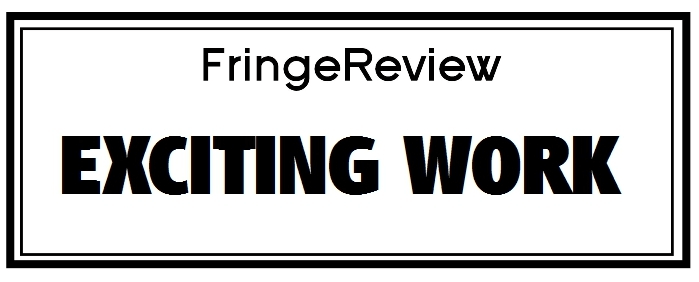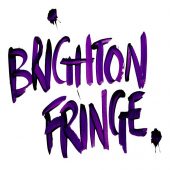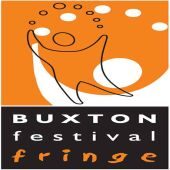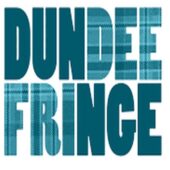Brighton Year-Round 2022
Michiko Shimanuki Piano Recital at All Saints, Hove
Michiko Shimanuki

Genre: Live Music
Venue: All Saints, Hove
Festival: Brighton Year-Round
Low Down
Michiko Shimanuki plays Haydn, John Hawkins, Ravel, Rachmaninoff, Shimanuki, Debussy and Barry Mills.
Review
Michiko Shimanuki’s piano recital is one of such distinction that it seems strange not to see it in London. The programme though is one drawing no obvious crowd, but packed with those who know exceptional music-making and premieres of major voices from the composers collective of new Music Brighton amongst others, including Shimanuki herself. There’s a thematic feel of spring moving to winter in this programming, played without a break.
Haydn Piano Sonata in C Hb. XVI/50
Shimanuki begins in a way she doesn’t go on: with the classical. She enjoys a pointillistic use of colour and it’s like being at a vivid illustration of classical thinking.
One of his very best-known and final sonatas, written in London in 1794-5, dedicated to Therese Jansen-Bartolozzi with whom he seems to have been having a passionate affair. The three-chord opening is one of those calls to attention that initiates a lively emphatic allegro full of sparkle and pyrotechnics, all in the elevated ‘white’ key of C major. So the key works as a relative calm against which the advanced harmonic language performs rather like a flying circus. There’s a jauntiness, a spikiness in the melody and rhythms of this opening Allegro that make it infectious and one of Haydn’s most memorable.
The following Adagio is more an Andante as played here – indeed elsewhere too: no-one wants to play this particularly slowly. It’s an exploratory song of happiness between two triumphant explosions. The mind boggles.
The Allegro molto is has a rondo feel and certainly undergoes more development than its memorable, perky opening suggests, which is one of those melodies that suggest the very end of the movement, and of course arrive there by winding back into a development and back again. It’s in some ways the most profound as the phrase modulate through the minor, undergo quasi-variational treatment, agogic hesitations and a traversal of depth before arriving in an emphatic C major.
The performance here is almost a sorbet opening to the more contemporary works, but not quite, since it’s a profound traversal of a great work however fleetly the 13 minutes go by, fleeter than the often 15-minute traversal of some, and the better for it.
We then move to two hommages to Haydn, one new, one well-known.
John Hawkins Lost in Translation Burleska Seria after Haydn
Shimanuki plays this wholly inside the work’s idiom. This brief jeu is one I’d really like to hear twice. Hawkins is one of those NMB composers – present today – whose engagement with Haydn spins creatively from a classical hub into contemporary but recognisable harmonic language. His choice of the oxymoronic ‘Burleska Seria’ delivers a rhythm of unstoppable brio against a darker palette and in effect invokes the spirit of Haydn through its very contradiction, quite apart from the thematic material echoing it distantly but recognisably.
Ravel Minuet sur le nom de Haydn
This delicate piece using Haydn’s letters in transposing B flat to H in German notation, is one of those 1909 pieces written to commemorate the centenary of Haydn’s death in France. Debussy, Roussel and others contributed, though Ravel’s remains the most well-known. Shimanuki plays this again with a pointed delicacy, as its slow, dream-like tempo dictates, pointing up in light a slightly neon-classical mode that ravel’s own neo-classicism highlights.
Rachmaninoff Prelude Op 32/5; Daisies Op 38/3
The shimmering of the Prelude here, emblematic of the intense haze of a Russian summer, and its torpor, is held a a tremolo as Shimanuki holds the rapidly alternating notes, which paradoxically (like Beethoven’s Op 111 in the second movement) invokes even greater stillness. Daisies is a more lyrically simple piece, invoking more a contemplation of their symbol: recondite, romantic, evanescent.
Michiko Shimanuki Climbing Roses; December Rose
Shimanuki’s own works sound remarkably like Scriabin touched with other voices, possibly like Kaikhosru Sorabji. Both works though are extended, 5 and 6 minutes respectively: the development’s not only suggestive of growth in the first, and a glassed-rose effect in the second, these are works that somehow represent in their spring and fall elements thematic development that it’s necessary to hear again and again.
The harmonic language is unmistakably late-romantic, elusive, beautifully elongated and filigree, like Scriabin on stretch, without the whiff of sulphur. How to describe it? Perhaps also by recalling Scriabin’s Soviet (Myaskovsky, Roslavets, Mossolov, Feinberg) and more particularly émigré (Sergei Protopopov, Nikolai Obukhov, Arthur Lourié) followers in 1920s Paris: an esoteric and remarkably unsung group of composers experimenting with different kinds of notation, twelve-tone and other scales to forge a new language not contingent on neo-classical fashion or serialism. Obukhov even invented a new keyboard instrument for the purpose!
Debussy: The snow is dancing (Children’s Corner);
Des pas sur la neige (Preludes Book 1)
These two juxtaposed snow pieces from Debussy’s output are roughly from the same period: 1908, 1910. They’re markedly different. One in Shimanuki’s hands glimmers and flickers with snow caught in wan light, a study in lyric strings of small pointed notes. The other is a lento conjuration of frozen despair, the two-note motif trudging through a harmonic spareness and relentless pace; a frozen nocturne as Shimanuki realises it.
Shimanuki is wholly inside the idiom of the second NMB composer, Barry Mills whose works complete the programme, and the latter set of the two three-piece suites dedicated to her. Often epigrammatic, his works of late have often become more extended – a Symphony for Strings for instance.
Barry Mills Winter Images
Composed 2018-20, these three pieces develop Barry Mills’ subtle, at times almost quietist palette in some small pieces – though there’s some surprises in the next set. This one is longer, lasting 7’ 30”.
This trio comprises in the first ‘Snowscapes’ a series of notes moving round the edge of harmonies, glacial, gentle, picking out a soundscape of winter: there’s also a wash of colour, but never less than precise.
‘Swirling Snowflakes’ releases a suspended cascade of notes and harmonies, never fore, but in fact as quiet as snow falling on snow, a series of harmonic counter-flurries.
‘Melting Snow’ moves precipitation into harmonies – so we’re treated with of suspended, pointed droplet notes morphing into resolved themes, enacting thaw.
Barry Mills Three Pieces for Michiko
Dedicated to the pianist, and like all Mills piano work suited to her complete musicianship, this brand-new composition – written through 2022 – is at 6 minutes briefer but more eventful than Mills’ foregoing triad: more dramatically shaded.
First there’s ‘Children meeting in Queen’s Park’, as described by Mills: “describes the joy of three children of white, Asian and black descent just running towards each other and showing each other great affection when they meet at the entrance to the nursery and this happened in the summer.” It’s essentially a gentle scherzo-ish snow-fight with sudden flurries and lurches, contained within a register that’s never too loud but bright, cheerfully affirming yet with an undertow of that tinkly sense of winter and freeze.
Second, ‘The Storm’ is a powerful up-tempo ramping-up in volume, velocity and off-axis potency: the surges and cross-rhythms are more unpredictable here too, harmonies denser and eventful. Quite thrilling.
Third and finally there’s a kind of afterglow, though we’re back in autumn. ‘Autumnal Atmospheres’ suggests a sudden intricately suggested drop of pressure, slowly muting colour across the keyboard. Musically if not seasonally after the intense second-movement storm, it lulls and atmospheric progression rounds this remarkable trio – with all six Mills pieces ending the concert – to a hushed conclusion.
Consummate exploratory playing by a composer-pianist wholly inside these idioms.








































